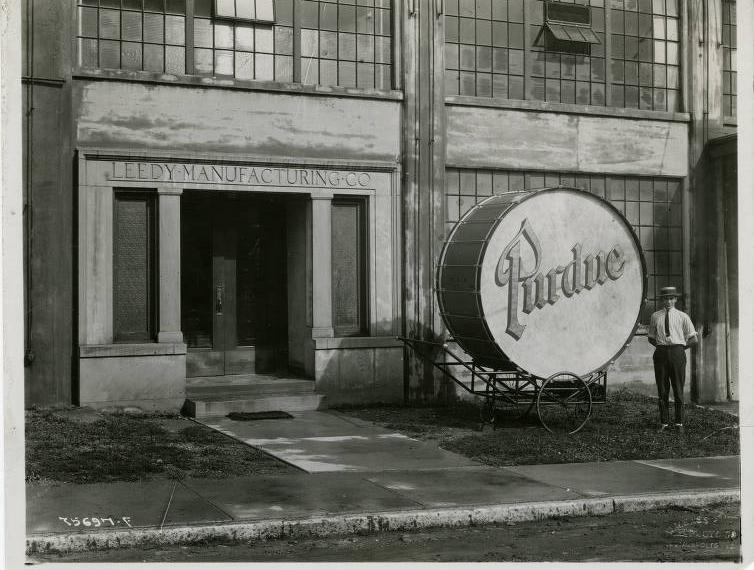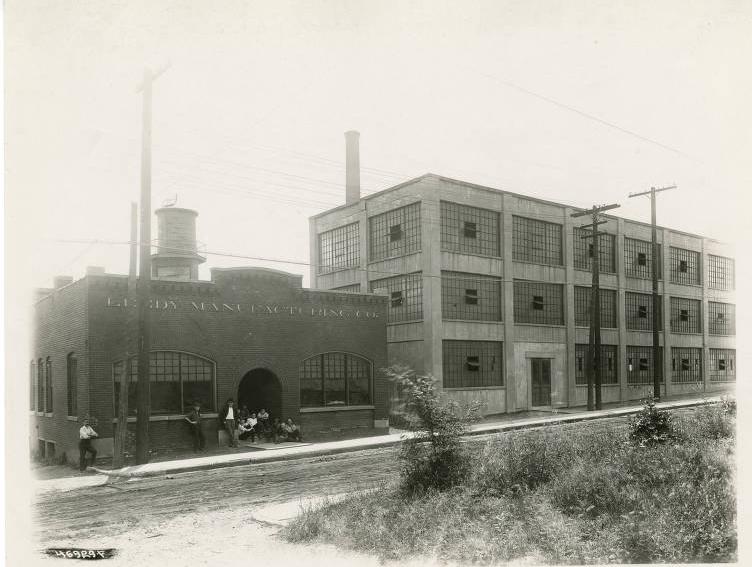Ulysses G. Leedy (1867-1931), the trap drummer for the , established a shop in the Building in 1895 with Sam Cooley to manufacture drums, stands, and sound effects. In 1903, Leedy built a new factory at the corner of Barth Avenue and Palmer Street. Additions in 1910 and 1920 resulted in 78,450 square feet of floor space. The firm considered itself the world’s largest manufacturer of percussion instruments, with over 900 items in its catalog, including drums, tympani, marimbas, and chimes.

Products were made on-site from raw materials. Departments included a tannery and drum head plant, lumberyard, chrome-plating works, and shops for making cases and custom tools. The company was responsible for numerous innovations and improvements, including the first vibraphone, but is best remembered by Hoosiers for making Purdue University’s first giant bass drum in 1921.

C. G. Conn, Ltd., bought the company in 1929 and sold it to the Slingerland Drum Company in 1955, keeping the Leedy name alive until 1958. In Indianapolis, Leedy and Cecil H. Strupe formed the General Manufacturing Company to manufacture Leedy and Strupe (L&S) drums, and Leedy’s family ran the business until 1940 when it was sold to the Indiana Drum Company.

Help improve this entry
Contribute information, offer corrections, suggest images.
You can also recommend new entries related to this topic.